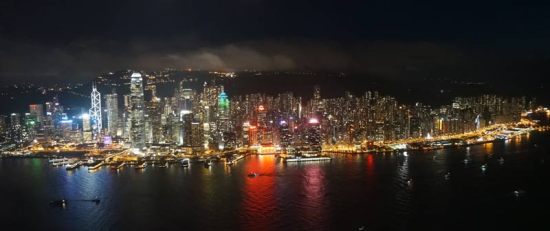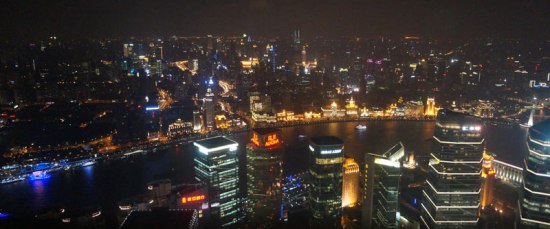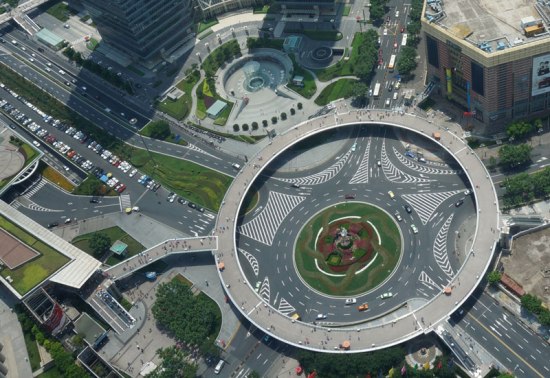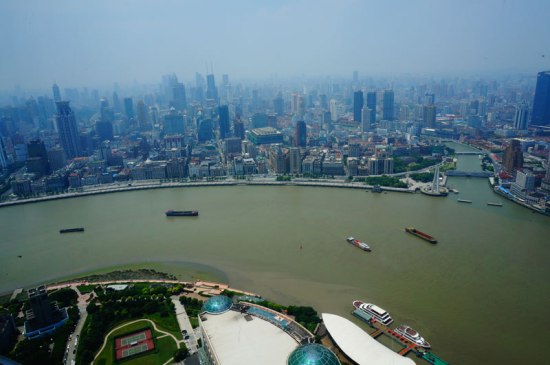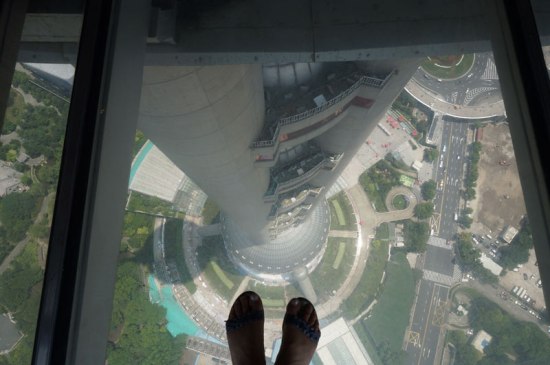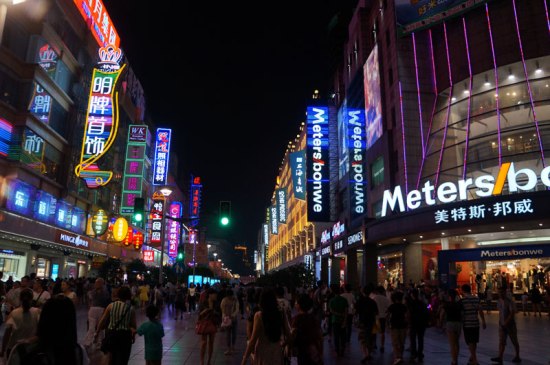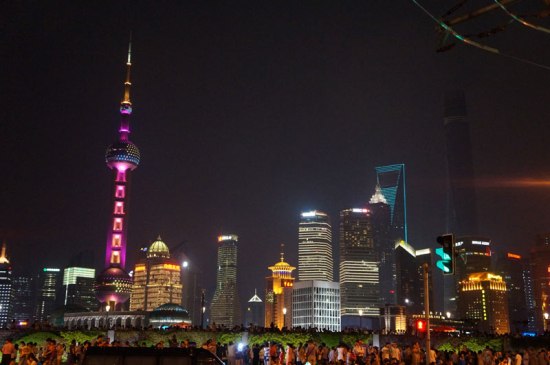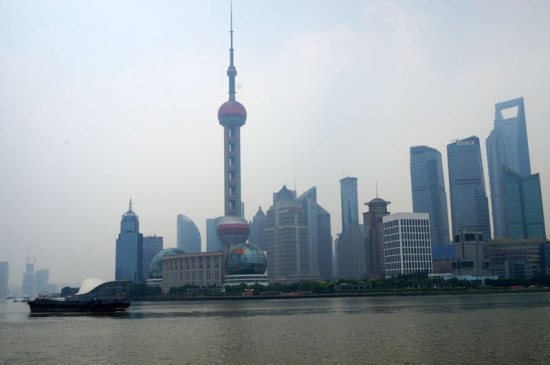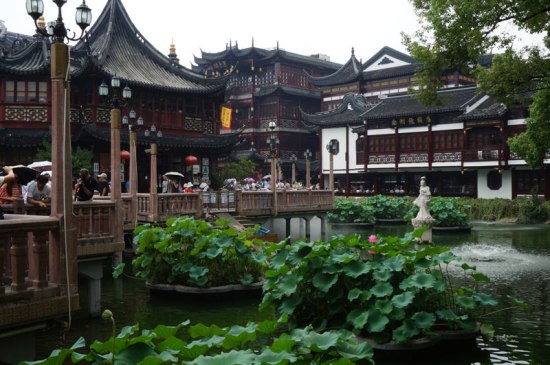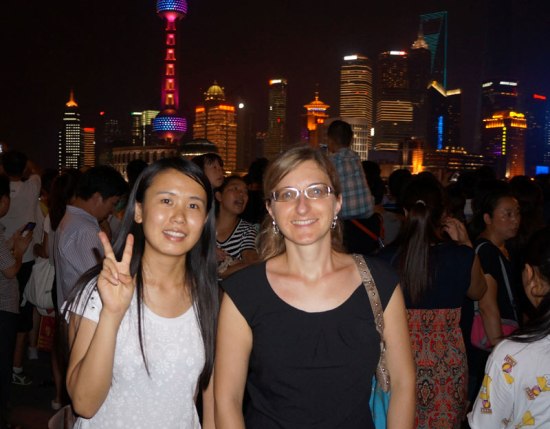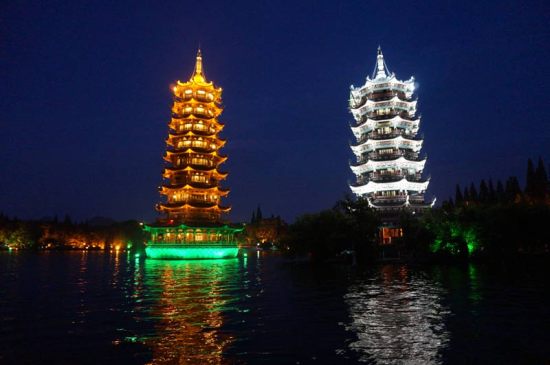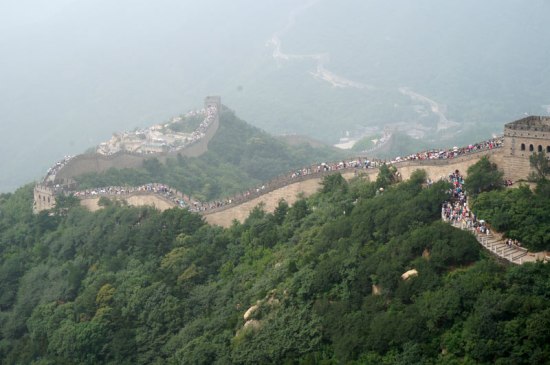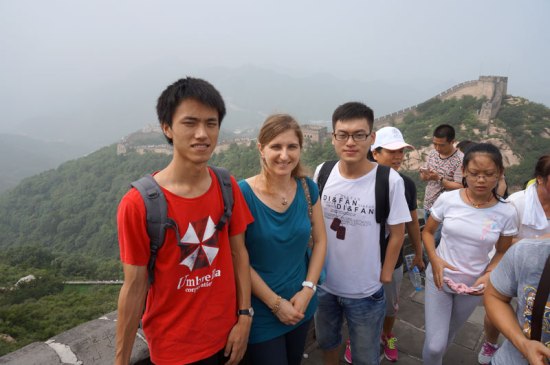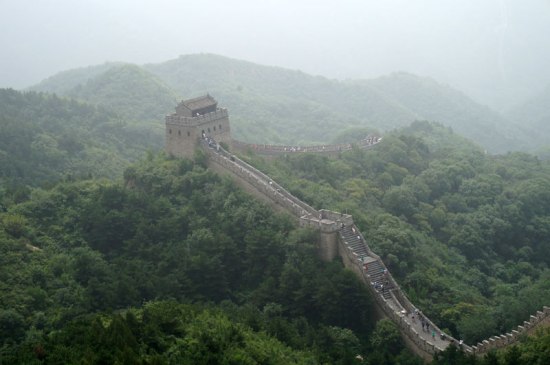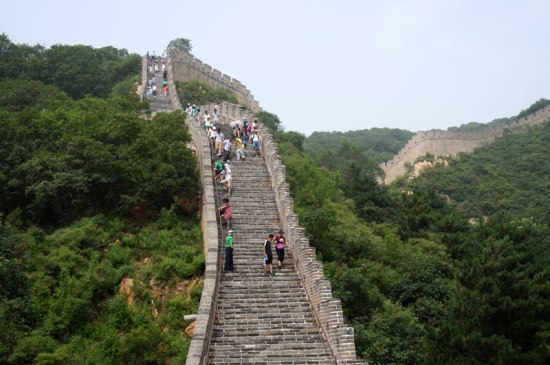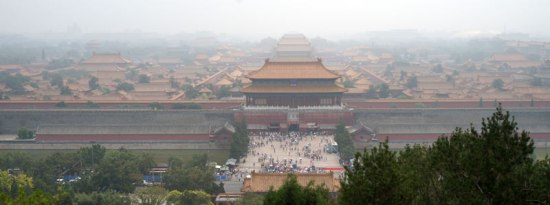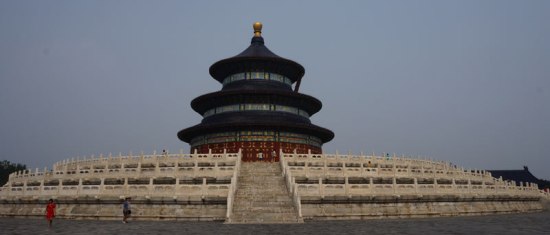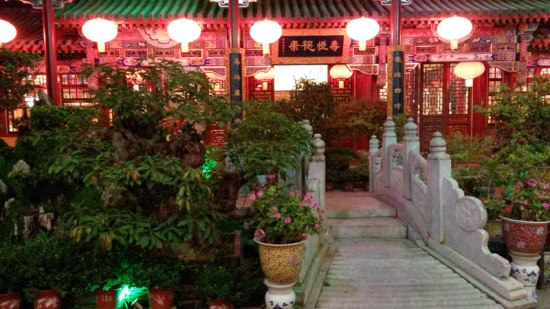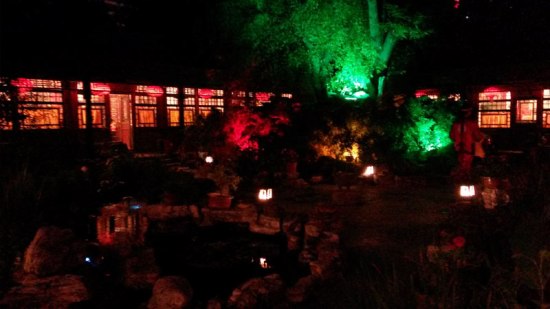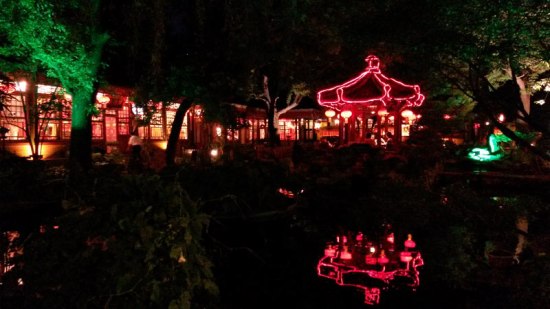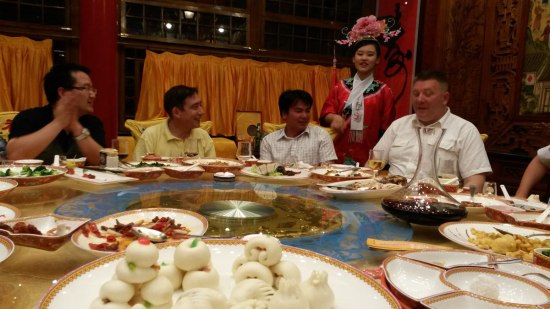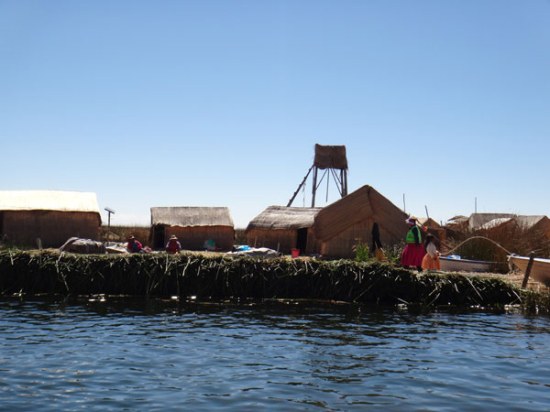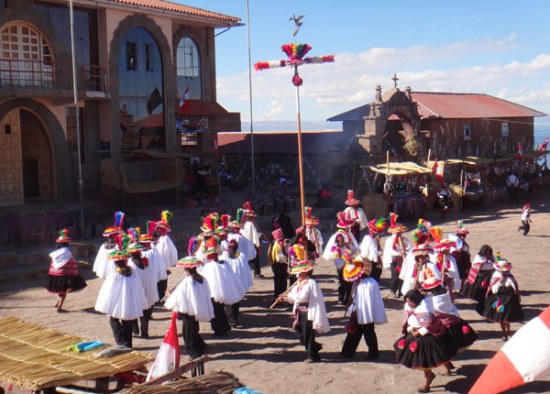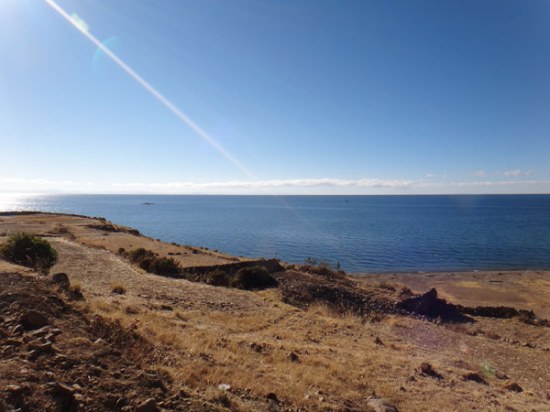Shanghai
August 15, 2014 at 9:51 pm | Posted in Uncategorized | Leave a commentWelcome to the most populous city in the world! With 24 million people Shanghai is indeed pretty crowded. There is really a lot to see in Shanghai, from the TV tower to the Bond and the Yu Gardens.
Thanks to sweet Jenny for the warm welcome.
Panda breeding centre in Chengdu
August 8, 2014 at 3:06 pm | Posted in Uncategorized | Leave a commentChengdu Researh Base of Giant Panda Breeding is a must see if you love animals! Yes, you can see pandas in few zoos, but here you can see baby pandas and new born pandas. The one year old pandas are the cutest, they seem to behave like human babies in Panda disguise.
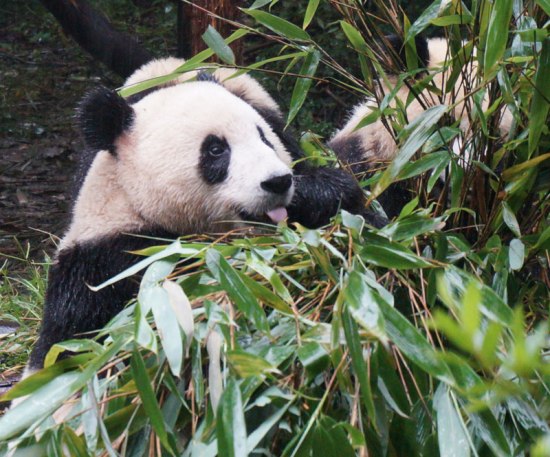
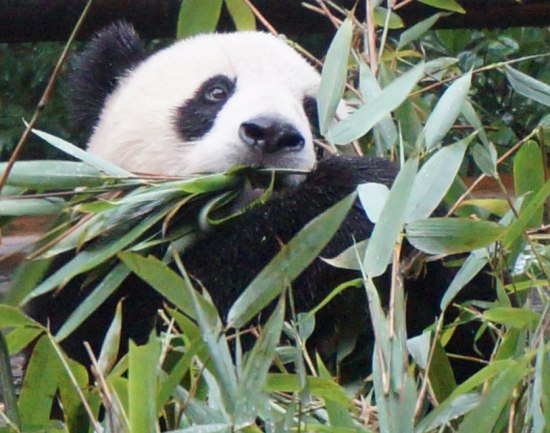
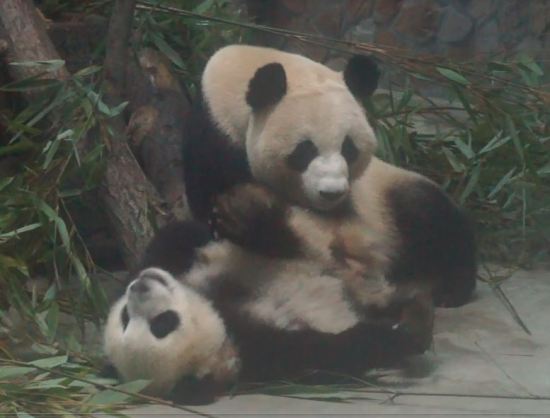
Mummy and baby panda playing
Must See in Beijing: Great Wall, Forbidden City and the Summer Palace
August 4, 2014 at 9:37 pm | Posted in Uncategorized | Leave a commentTags: Asia, china
One of the most well-known and visited landmarks of China is the Great Wall. The easiest way to access it from Beijing is to visit the Badaling section, where you can catch the cable car which will take you to the top. In summer time it’s hot and humid, and there are millions of tourists (literally), so that from the cable car you can just walk one step every 2 minutes, such is the crowd! I had the luck to have two special guides, my sweet students Yang and Liong with whom I walked “down” from the cable car to the parking lot (which is actually up and down). However for Chinese people it’s better to walk rather than to take the cable car because -according to a Chinese saying- if you don’t climb the Great Wall you are not a hero. Too bad I lost my chance to be a hero, but climbing down it’s not really “down” as you can see from this picture. It’s quite an effort with over 30 humid degrees. Funny enough, local people say Beijing is very dry.
The second greatly famous Beijing tourist spot is the Forbidden City. Despite its intriguing name, it’s not as spectacular as one might imagine, it’s massive. It seems that even the emperor could not manage to see it all! In ancient times normal people were not allowed inside, and if anyone was caught to smuggle within the Forbidden City, he would have been killed. The palaces and square inside the Forbidden City are huge, and all in the same traditional style. Toward the exit the scenery changes in the the garden of the emperor area, with pleasant trees, flowers and bridges. Far more scenic and romantic is the Summer Palace, in Haidian district. Interestingly once you get inside the gate which leads you to the Forbidden City, you can walk back: the street it’s a one way pedestrian street! If you want to get back to Tiananmen Square, you can’t! You have to walk all the way around. So my suggestion is to visit Tiananmen Square first, and then then Forbidden City, since from the exit of the Forbidden City to the famous square it’s a 40 minute walk!
Just in front of the Forbidden City exit there’s a nice park: it’s a pleasant and much less crowded environment where to relax under the trees’ shadow. Elderly local people gather in this park to dance, sing and find a small relief from the hot and humid climate of the city. The view from the main temple on the top of the hill is certainly worth the small hike: from there the magnitude of the Forbidden city seems even more impressive.
A much more scenic and romantic royal place to visit in Beijing is the Summer Palace. It’s not just a palace: it’s a 2.9 square kilometres garden with an immense man-made lake inside the enclosed former royal residential area and several buildings scattered around the immense area (especially considering that it’s in the center of a city of 21 million people). Hundreds of small boats punctuate the lake, providing a pleasant activity for locals during the summer heat. Romantic bridges, artistic palaces, beautiful flowers and lovely paintings: Lucky king, what a nice place to live.
Beijing’s Hutong: the new China
If you think Chinese people are – as you read in most books – traditional, family oriented, and don’t drink milk, I suggest you to visit Hutong area in Beijing, a popular place for local teenagers. China’s youngster creativity can be clearly witnessed here, in this crowded street with the latest fashion and cuisine trends. Thousands of teenagers and twenty something walk up and down the street with milkshakes (often a Chinese version of frappuccinos) in their hands, checking out fancy colorful and extravagant shops for catching the latest trends.
Just off Picai Hutong street, you can see the house and paintings of Qi Baishi, the most famous Chinese painter. Thanks to Jin Ling who brought me here! Tthe place is actually well hidden especially for foreigners.
Temple oh Heaven
Haidian District, Beijing
July 27, 2014 at 11:16 am | Posted in Uncategorized | Leave a commentTags: beijing, china, food, restaurant
Back to Beijing, we start the summer school in the classic Chinese way: eating good food with friends!
The Bai Jia Da Yuan Restaurant is one of the most beautiful restaurant locations I have ever seen: strongly suggested! We even got to see singing, dancing and face changing performances directly at our table.
Cusco
August 17, 2012 at 11:51 pm | Posted in Uncategorized | Leave a commentTags: Peru, South America
Cusco is one of the most beautiful cities in Peru, with a huge and charming central square, a famous cathedral, plenty of churches, nice markets and remarkable Inca ruins! Yet, Cusco is at 3400 meters above the sea level, which makes life quite harder than usual. You can easily spend a week here exploring the numberless churches and ancient sites or doing more sprotive activities.
The Inca capital is a fascinating city, rich of history, beautiful colonial buildings, Inca ruins, nice restaurants and plenty of shopping opportunities. The best sight is the Plaza de Armas, the main square of the city, with the massive Cathedral, churches, nice trees over green benches, and porches filled of eating and shopping opportunities. The Cathedral is the biggest church in Cusco (and probably in Peru): it took 100 years to build it. The massive altar is made of 1250 kg of best quality silver.
The most controversial painting is a Cusco version of the Last Supper, painted by Marcos Zapata (1710-1773), with the Apostles enjoying a cuy (guinea pig – typical Peruvian Andean dish) and a Glass Of Chicha, the local beer. Remarkably, Judas has the face of Pizarro, the Conquistador…
The cathedral’s choir made of wood, with two level: one for musicians and one for singers. there are two organs created with material from Cusco. The choir has been placed is in the middle of the church, instead of being behind the main altar as usual, for acoustic reasons. another quite unique piece you can see in the church is the “Lord of the tremors,” a black Jesus made of ebony, and made darker by the smoke of the candles. Indeed there are many tremors and strong earthquakes here in Cusco, which in the past centuries destroyed the Church itself and the whole city.
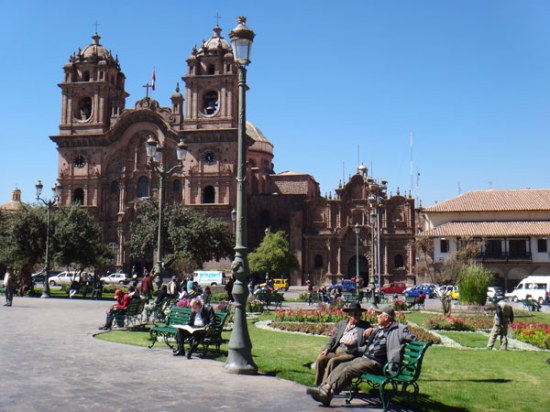
Abuelos enjoying winter sun at Plaza de Armas, Cusco, Peru.

Last Supper by Marcos Zapata in the Cusco Cathedral
A second important monument in the city is Coricancha or Qorikancha (from the Quechua words Quri Kancha meaning ” Golden Temple”), near the Avenida El Sol. Here, the Santo Domingo church was built on the top of the Inca Golden temple. The name was given for the amount of gold that covered the temple, which was removed by the spaniards.
Unique to the Incas is their contruction techniques: Inca walls are made only with craved stones (no cement) and resisted many earthquakes. The secret seems to be the typical inclination of the walls, between 3 and 7 degrees. The walls are not straight but slightly leaning toward the center, so that all buildings have a trapezoidal shape.
At the Coricancha site, a reproduction of a golden Inca altar can be seen, with the major Inca symbols: puma (symbolizing the living world), condor (symbolizing the higher level inhabited by the superior gods), snake (underworld), sun, moon, river, etc.
Cusco is a gateway to various excursions, from Inca sites to more active types of activities like Quad biking, horse back riding and kayaking.
Just a few miles above the city, almost a walkable distance, lies the UNESCO World Heritage site of Sacsayhuamán. At 3800 meters are the ruins of an Inca walled complex 400 meters long. This site was later used by the Incas as a fortress during the fight with the Spanish conquerors. The biggest stones are up to 120 tons each, often used as corner stones. The temple is built on three levels, symbolizing the underworld, living world and upper world – according to the Inca mithology. The top level of the temple offers an amazing view on the whole city of Cusco of 700.000 people, which lies on hills surrounding the very center of the city.
The ticket to this site includes the entrance to other smaller Inca ruins sites, although they are not as exciting: Tambomachay and the Q’enko, with the latter being a cave where the Inca used to mummify important personalities. Tambomachay is also referred to as the ‘Baños del Inca’ or Inca baths, as it was a site for ritual bathing. Reduced ticker for these Inca ruins sites is 70 soles (22 euros).

Sacsayhuamán.
Machu Picchu
August 17, 2012 at 11:47 pm | Posted in Uncategorized | Leave a commentTags: Peru, South America
Finally, Machu Picchu!
One of the new seven wonders of the world and possibly the most visited site of Peru.
The historic Sanctuary of Machu Picchu is a Unesco World Heritages site. It stands 2,430 meters above sea-level, in a tropical mountain forest. This Inca site is one of the most well preserved because the Spaniards never discovered it. It was built in the 15th century and soon abandoned. It was a 11-year-old local boy who led the American researcher Bingham to Macchu Picchu. The historian agreed with the local authorities to bring some of the artifacts to the university of Yale to be studies, and thus far they have not been returned to Peru.
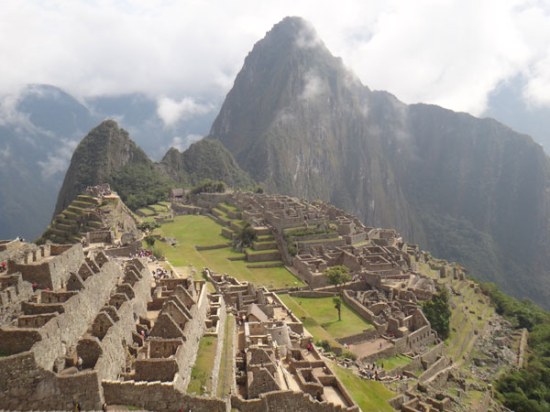
Machu Picchu was a sort of world trade center of the empire. It was the gateway to the Amazon, and thus here were stored fruits, vegetables and cereal (like Quinoa) from the Amazon, to distribute to the rest of the Inca empire. Inca cities were connected through the so-called Inca trails: so far “only” 2400 Km of Inca trails were found, but it is believed that they should cover 48.000 Km in total.
The stones for building the site were already found in that area, and were either moved to construct buildings or shaped in the very same place where they were found if they were believed to have religious value. Houses and storages look the same, they are little rectangular houses: the orientation of the door indicates their function. Houses had the door facing east, while storages had the door facing to the remaining directions. The Incas were very knowledgeable about the universe: they Inca calendar is so precise that it only needs an adjustment every 11000 years! While the calendar we use now, as we know, needs to be adjusted every 4 years (on Feb 29th). Inca years are shorter, lasting about 4 months. At Machu Picchu there is an observatory, clearly distinguishable from the other constructions for its circular shape. The two windows of the building are orientated according to the azimuth.
The Inca society was very meritocratic: the upper part of the city was reserved for the smarter people, for the intellectuals: architects, astronomers, doctors, etc. The lower part of the city was for those people doing practical jobs like agriculture or carpentry.
Our guide was very keen in explaining that the Inca – unlike the Maya – were not sacrificing people but just animals. There is evidence of murdering 16 people for religious rituals, while the Spaniards accounted on their diaries the murder of hundreds of people, peraphs to make the native Americans look like barbarians.
Ah and by the way, lamas actually spit. Tested!
Puno, Peru
August 6, 2012 at 3:50 pm | Posted in Uncategorized | Leave a commentTags: Peru, South America
Puno is lake Titicaca’s capital. A small city at 3800 meters which offers numberless options for exploring the highest navigable lake in the world. There’s not too much to do in town, but the center offers nice opportunities for a pleasant walk or dinner.

Blog at WordPress.com.
Entries and comments feeds.
